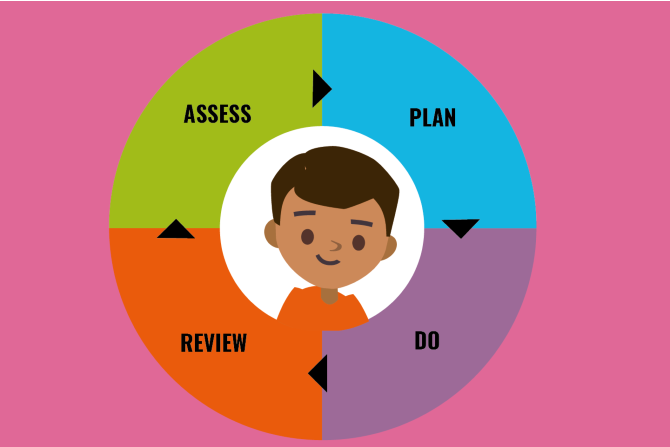Visual Impairment (VI) refers to a range of difficulties from partial sight through to blindness. Individual needs vary - there is a wide range of visual difficulties and the requirement for one young person will not be the same for another. The level and structure of support provided will be developed through assessment of the young person’s needs. Parents and the young person themselves are key contributors to that assessment and to the development of support plans and interventions.
Young people with visual impairments cover the whole ability range. For educational purposes, a young person is considered to experience visual impairment if they require adaptations to their environment or specific differentiation of learning materials in order to access the curriculum.
Degrees of visual impairment
The following are nationally agreed definitions of degrees of vision loss. They refer to the corrected vision (with glasses/contact lenses if worn) in the better eye.
- Mild loss – slightly reduced distance vision of 6/12- 6/18 with good near vision OR a diagnosed visual condition.
- Moderate loss – reduced distance vision of 6/18- 6/36 and slightly reduced near vision OR moderately reduced distance vision of 6/24-6/36 but poor near vision requiring enlargement of materials.
- Severe loss – 6/36 – 3/60. The young person may have some, but not necessarily all, of the following in addition to those in levels 1 and 2: difficulty accessing large amounts of text so that modified materials are required / safety issues with regard to PE, practical science, technology / require mobility and independence and daily life skills training.
- Profound loss – educationally blind, using Braille to access the curriculum, 3 /60 or less. The young person may have some, but not necessarily all, of the following in addition to those in levels 1, 2 and 3: unable to handwrite / need to use mobility aids and training to move around safely / use Braille or audio to access text.
Young people with any form of visual impairment are entitled to have their needs recognised and met in their education settings.
It is likely that referrals to the Vision Support Service are made directly from the hospital eye department when the eye condition is diagnosed. Any parent or professional can also contact this service directly. The Vision Support Service web-site provides more details of their service to schools and families.


